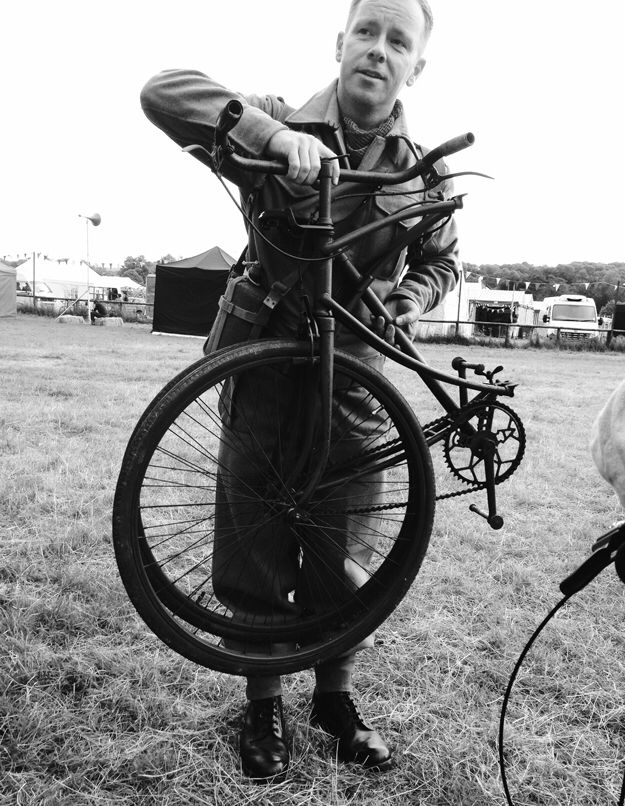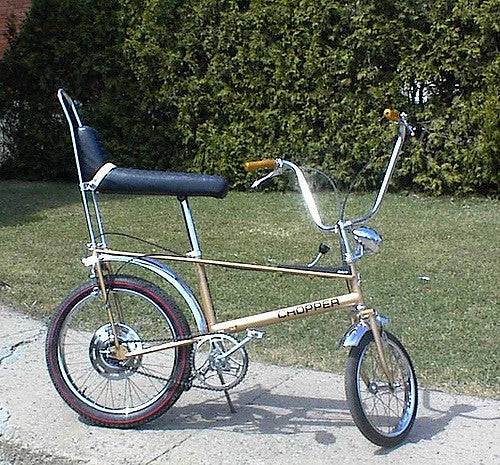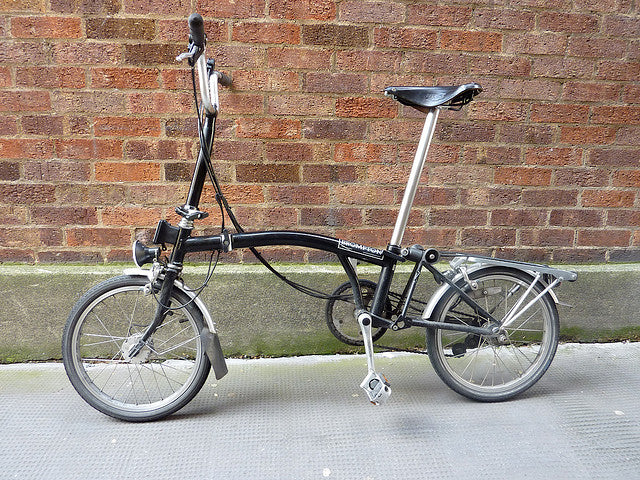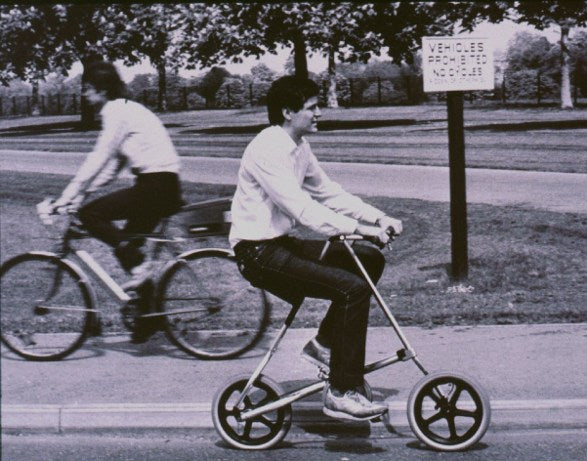
A History of Iconic British Bikes and Folding Design
Britain has a reputation for being at the forefront of iconic and innovative design. Great designs change history and improve peoples lives through the invention of revolutionary objects. Here is a selection of important British bicycles, folding bikes and scooters and more recently a folding wheel. Through the power of design and engineering, these designs have become cemented in history, and are objects that evoke feelings of admiration and nostalgia throughout the world.
1939 WWII Aiborne BSA “Folding Parabike”

The original British folding bike was developed during the Second World War for use by paratroopers, leading to its name of the ‘folding para bicycle’. Officially dubbed the WWII Airborne BSA, this original use of the folding mechanism was revolutionary for the time, and enabled airborne British troops to navigate more quickly than on foot once they had landed. Weighing 9.5kg, paratroopers would drop from aircraft holding onto the bicycle, before proceeding to unfold it into its full form on the ground. These bikes were also used as handy runarounds on military bases. In situations of conflict, the bikes would be abandoned and were specifically designed to be disposable for this reason.
1962 The Moulton Bicycle

Developed in 1962 by Dr Alex Moulton, Moulton bicycles are unique as they are noted for their unconventional frame design, small wheels and front and back suspension. Disappointed with the classic style of bicycle, aeronautical and automotive engineer, Alex Moulton, set about creating a new design. He believed that the traditional diamond frame was inconvenient to mount, difficult to adjust to size and uncomfortable to ride for both men and women. The Moulton bicycle was designed to combat these issues with the signature ‘F’ frame and additional suspension for improved levels of comfort. British designed and manufactured, the first Moulton Bicycle was launched at the Earls Court Cycle Show in 1962.
1970 The Raleigh Chopper

The ‘Chopper’ was originally created in Nottingham in the 1970s by the Raleigh Bicycle Company. Although it was intended to be a children’s bike, and was widely used as such at the time, the Raleigh Chopper has since become a nostalgic collectors item amongst adults. Instantly recognisable for its unique look, the Chopper was designed for doing wheelies and was strongly inspired by 1960s dragsters. The Chopper was designed by Tom Karen of Ogle Design, but Raleigh refused to give him credit for the work. As a result, Alan Oakley, a member of Raleigh’s staff, laid claim to designing it. Although Oakley is widely credited as being the designer, his claim was actually false.
1979 Brompton Folding Bicycle

One of the most popular folding bike models, due to its compact foldability, the Brompton Bicycle was founded in 1976 by Andrew Ritchie of Brentford, London. A Brompton bike uses over 1,200 individual pieces and 80% of these are manufactured purely for the Brompton design. The modular design has remained unchanged since the original patent was submitted by Andrew Ritchie in 1979. The folding aspects of the Brompton design have made this particular bicycle extremely popular amongst commuters, particularly in London, as they easily fold down for access to Tubes, trains, or buses.
1987 Strida Folding Bicycle

The first Strida, the Strida 1, was a belt-driven, folding bicycle designed by UK engineer, and Royal College of Art graduate, Mark Sanders in 1987. It raised a few eyebrows because of its unusual ‘A’ shaped frame that could collapse and become easily portable for the user. Nothing however, could beat the practicality of it. Over 20 years on and Strida are still going strong, having released the Strida 5 in 2007 and later a 2-gear option in 2009 with disc brakes, metal spoked wheels and high pressure tyres.
2010 SwiftyONE Folding Scooter

Designed in 2010 by Jason Iftakhar, founder of Swifty Scooters, the SwiftyONE is known for it’s innovative folding mechanism, premium quality and smooth ride. Jason Iftakhar is also a graduate from the world renowned Royal College of Art in London, which is where he met his wife and Swifty Scooter co-founder Camilla. The first 1000 scooters were manufactured locally in Manchester UK and included some limited edition collaborations, notably 100 pieces for Paul Smith, and 100 for The Conran Shop, these are likely to become collectible.
In 2011 the SwiftyONE folding scooter was at the forefront of a growing trend in adult kick scooters, used for commuting and urban leisure, offering not only quality, but style too. Adult kick scooters are now increasingly recognised as a viable way to manoeuvre through a busy urban environment. The unique folding mechanism allows for convenient storage and can be effortlessly carried, or rolled on its front wheel onto buses or trains.
2013 Morph Wheels

The world’s first folding wheel, The Morph Wheel was designed by Duncan Fitzsimons in 2013. Initially designed as a concept to apply to a bike, The Morph Wheel is now developed specifically for a folding wheelchair. Licensed by Maddak health care company in the US, the folding wheel allows for easy storage of a wheelchair, for example to take onto a plane, or to fit into your car, revolutionising travel for wheelchair users.
Duncan Fitzsimons was awarded the 2013 Product of the Year for Transportation, by the Design Museum, and also the 2014 Alex Moulton Award, by the Institute of Engineering Designers.
